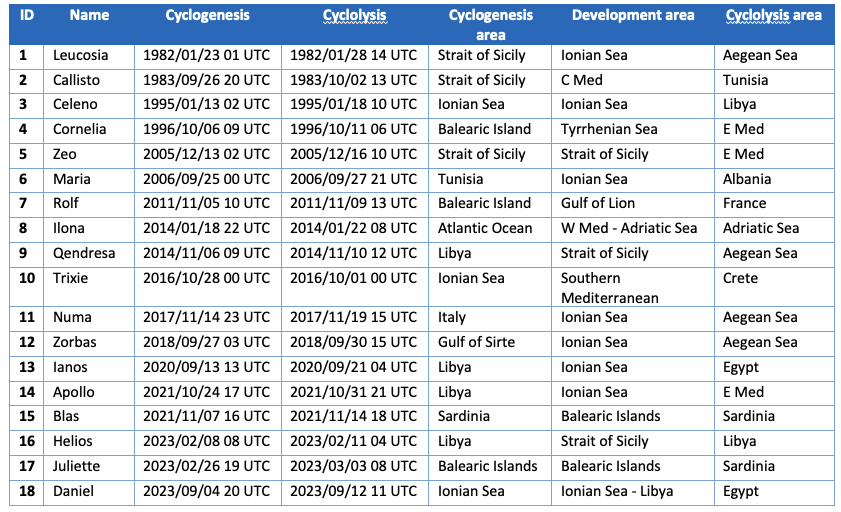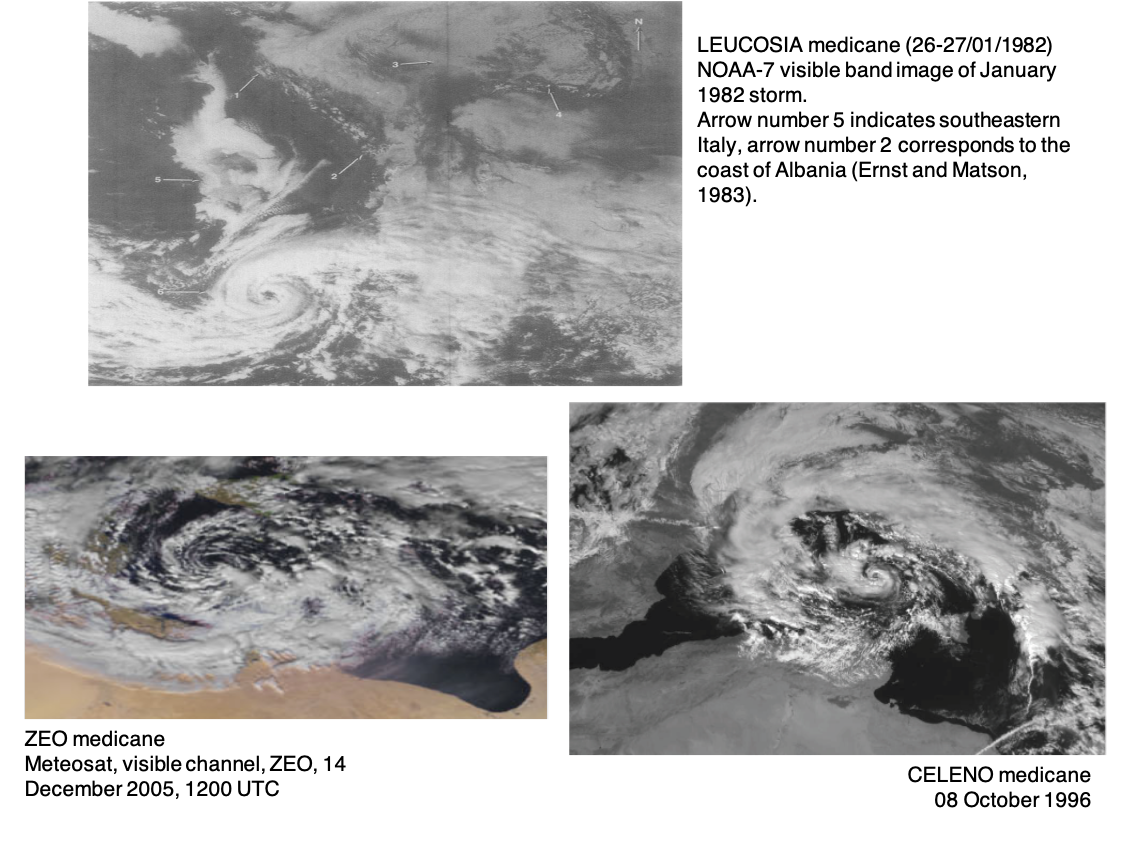Case Studies
Understanding Medicanes Through Case Studies
To comprehensively understand what medicanes are and how they behave, scientists focus on the analysis of single case studies. In parallel with dynamic climatological analyses, the detailed examinations of individual medicanes help us understand their unique characteristics and how they form and evolve. By analyzing various cases, researchers can identify patterns and differences that are crucial for improving our knowledge and forecasting abilities for this category of cyclones.
Why Case Studies Matter
Diverse Influences: Medicanes are influenced by different processes, such as diabatic forcings (related to latent heat released by vapour condensation) and baroclinic processes (related to the interaction between upper-level disturbances and low-level temperature gradients). Each medicane can show different traits depending on these influences.
Warm Core Development: All medicanes develop a warm core, similar to tropical cyclones. However, the mechanisms responsible for the warm core generation can be different (diabatic processes vs warm seclusions developing in the mature stage of extratropical cyclones). Case studies help us distinguish the nature of the different cyclones. While it would be useful for forecasting and impact purposes to discriminate the cyclones that develop via air-sea interaction processes (as real tropical cyclones) --they are the most intense-- we are not able yet to distinguish them in real-time using observations or numerical tools.
Nuanced Evolution: By examining individual cases, scientists can note subtle differences in how medicanes evolve, in terms of both low-level (air-sea interaction) and upper-level (e.g., presence of a nearby jet streak) features. These can include changes in their structure, intensity, and impact.
Creating a Comprehensive Overview
To provide a detailed picture, MEDICANES project compiles information on medicanes. This includes:The following Table provides a list of medicanes analyzed in scientific literature.

By systematically studying these cases, we can better understand medicanes, improve their predictability by using numerical models, and ultimately help mitigate the impact of these potentially destructive storms.
Data Sources
Researchers use a variety of data sources to gather this information, including:

